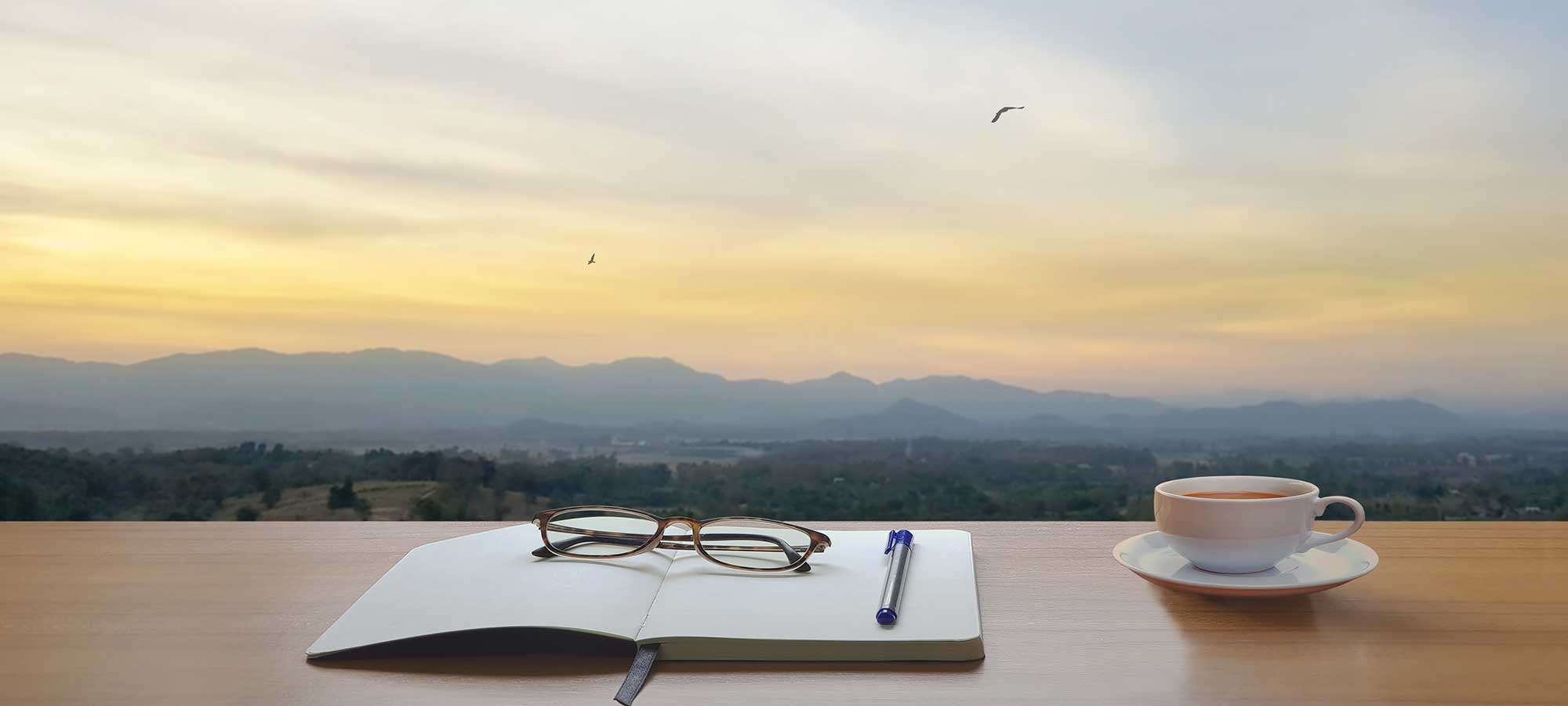How to Examine Deeply Rooted Limiting Beliefs
How do we examine the deeply rooted limiting beliefs within us?
In our lives, we all consciously and unconsciously build ways of thinking and being to help us feel safe and secure. One step to move out of this automatic, comfortable, well-patterned existence is to be curious, step into the unknown, and seek to see things with new awareness.
Grounding your mind, body, and spirit is an important step to moving into this awareness. I invite you to try this “grounding practice” for a week and then move into the exploration work of Step Two.

Step One: Ground Your Mind, Body, and Spirit.
To start, find somewhere quiet and comfortable to sit and be still.
- Have your feet firmly planted on the ground. Your knees should be bent and your head, neck, and shoulders Allow your hands to rest gently in your lap, maybe perhaps with palms up to signal openness.
- If this is comfortable for you, you can close your eyes, or you can gaze gently at a focal point, maybe a candle.
- Take a deep breath and then slowly exhale. Take two more deep, cleansing breaths.
- Notice the impact three intentional breaths have had on your mind, body, and spirit.
Now I invite you to do gentle belly breathing.
- Place one hand on your upper chest. This hand should remain relatively still as you breathe in and out.
- The other hand is placed below your ribcage, above your navel. Having a hand here will allow you to feel your diaphragm move as you breathe.
- Breathe slowly through your nose. The air going into your nose should move downward so that you feel your stomach rise with your hand.
- The movement (airflow) should be smooth.
- Exhale slowly.
- Repeat five times.
Gently notice how you feel after this breathing exercise with your hands touching your chest and stomach. Reflect on how it was to connect to your body in this way.
Now you are ready for your body to speak the truth to you.

Step Two: Identify Your Limiting Beliefs.
Unhelpful patterns and limiting beliefs are tricky because they are so embedded we may not even see them.
- Slowing down to listen to our internal “knowing” is critical.
- This is why we started by fully engaging our whole selves.
- Our grounding will help us navigate the delicate work of exploring our vulnerabilities given our personality, core beliefs, and life experiences.
Opening ourselves to the tender areas where we are especially sensitive to criticism, rejection, and failure is deep work.
- Limiting beliefs can serve as triggers that plunge us into old scripts about how we are defective in some way.
- We need to look at them because they get in the way of us being our best selves.
- Taking in all the presenting facts instead of just the ones that fit our pattern helps us make critical changes.
Since we are exploring tender areas that are deeply embedded, take your time with this step.
- Give yourself twenty minutes for your reflection time and don’t feel you need to answer all the questions at once.
- The important piece is that you are listening and learning from those deep parts of you.
- This is a process that can take days and even weeks as you gently explore.

Reflect upon the following questions and outlined steps: (Maybe write your thoughts down to help you better see what is being revealed to you. Also know this is a process so don’t rush yourself.)
What internal obstacles or limiting beliefs get in the way of your best self?
- Reflect on words or images that represent you as your “best self.”
- Allow your mind, body, and spirit to inform you. Breathe in, “I am my best self when…” Another prompt could be, “I am at my best when I…”
- Now, consider those things that get in the way. They may have developed over time, they may be core beliefs that formed when you were young, or could be based on life experiences.
For me, my unworthiness belief kept me from being the full person I was meant to be for years. My sense that I needed to stay small and not be seen inhibited the life I lived.
How do these limiting beliefs or internal obstacles show up?
- Can you be curious about this? Are you able to look at them with objectivity and seek to describe them in their fullness?
- Do you notice the obstacles more in your mind, body, or spirit? Thoughts pass through our minds and may also reside much more deeply within us. Where do you notice yours?
- Will you take some time to notice when and how this happens? Use your “body scan” tools to raise more awareness around how deeply rooted this belief or obstacle is.
My obstacles showed up in the need for perfection. If I was above reproach, things would go smoothly. If I could impress with the quality of whatever I was delivering, no one would see the insecure person who considered herself less than others. I could feel a tightness in my chest and tension in my shoulders. I am sure outwardly it translated to rigidity in my posture.
How do your limiting beliefs or internal obstacles keep you from your best self?
- What do they keep you from actualizing?
- What are the costs of continuing to invest time and energy in maintaining them?
- How do they impact others around you?
Perfection is exhausting! In giving all my time and energy to “excellence,” I had none left for fun or relaxation. I prevented my full self from showing up. Even those closest to me didn’t know the whole me. I don’t know if I even knew the whole me.

Step Three: Explore the Limiting Beliefs.
We may (and probably do!) have more than one limiting belief. Take your time and be gentle with yourself as you explore them.
Describe your Limiting Belief.
- Be as specific as you can be to pull forth the essence of this part of you that holds you back.
- You may pull elements from all the questions in step two to flesh out the belief.
For me, the limiting belief was a protective shield that guarded my heart. If I am perfect, I will show my worth and not be criticized. I can be appreciated for what I have done and I have specific evidence of my value. This shield was strong and impenetrable, maybe titanium because it was also so light I didn’t notice it. It was an outer shell that felt comfortable yet also constricted my breathing and my growth.
Now ask your limiting belief, from where do you come?
- This is deep work and may require sitting and listening to your whole self. By that I mean you may not have “head knowledge” but your body or your spirit may give you a sense of “knowing.” Sit with that and allow it to reveal itself.
- Another question you can ask to build on this is, what purpose does the limiting belief serve?
- A final question is, what are you trying to protect?
My body led me to my wisdom around these answers. It took a long time to unearth the anger and hurt that lay beneath the surface and for me to understand my truth. This is true excavation work. Give yourself time and space to find your answers.

Step Four: Pause and Breathe.
Limiting beliefs can be difficult and it is important to remember the value of grounding yourself as you explore them.
- How is your breath? Deep or shallow?
- Is it time to take three deep breaths again?
- Now that you are grounded, ask your body and spirit if there is anything more you need to know about your reflections.
At the end of this time, take a deep breath and exhale gratitude. Thank your body for the wisdom it has given you. Thank it for being your partner in truth.
If these steps to examine and challenge your deeply rooted, limiting beliefs began to open you up to new possibilities, I would love to share the first chapter of my guidebook, Awakening the Light: A Survivors to Thrivers Going-Forward Story to see if this is the next step for you.
- To receive it, contact me at tambry@survivorstothrivers.com.
- I also welcome the opportunity to work with you to claim your exciting next chapter by transforming unhealthy patterns into life-giving ones that manifest your thriver self.
My transformation journey includes examining limiting beliefs and consciously choosing mindsets that lead to my best self. I hope all survivors will allow their truth to permeate their darkness and guide them along a path to peace, joy, love, and healing.
Your partner in Thriving, Tambry
I am Tambry Harris, founder of Going Forward: Survivors to Thrivers and author of most of our posted blogs. I found my voice, named my truth, and created a vision to help others who have experienced the pain and shame of sexual abuse and/or domestic violence find healing, strength, and freedom. I have a Master’s Degree in Applied Psychology and certifications in the areas of Leadership Coaching, Spiritual Direction, Change Management, and Diversity. Through Going Forward: Survivors to Thrivers, I seek to provide individual guidance, retreats, and speaking engagements to bring awareness and light into the shame and silence of abuse and trauma.

 Talk To Tambry
Talk To Tambry
I am glad you have taken the time to engage with this blog. Sometimes it is helpful to process new insights that emerge. If you would appreciate brief time with a someone who understands, our Talk to Tambry offering is for you. For 30 minutes, you can receive support from Tambry who is a certified life coach, spiritual director and a survivor who has been on the journey as well. This is offered at a reduced rate of $50.




